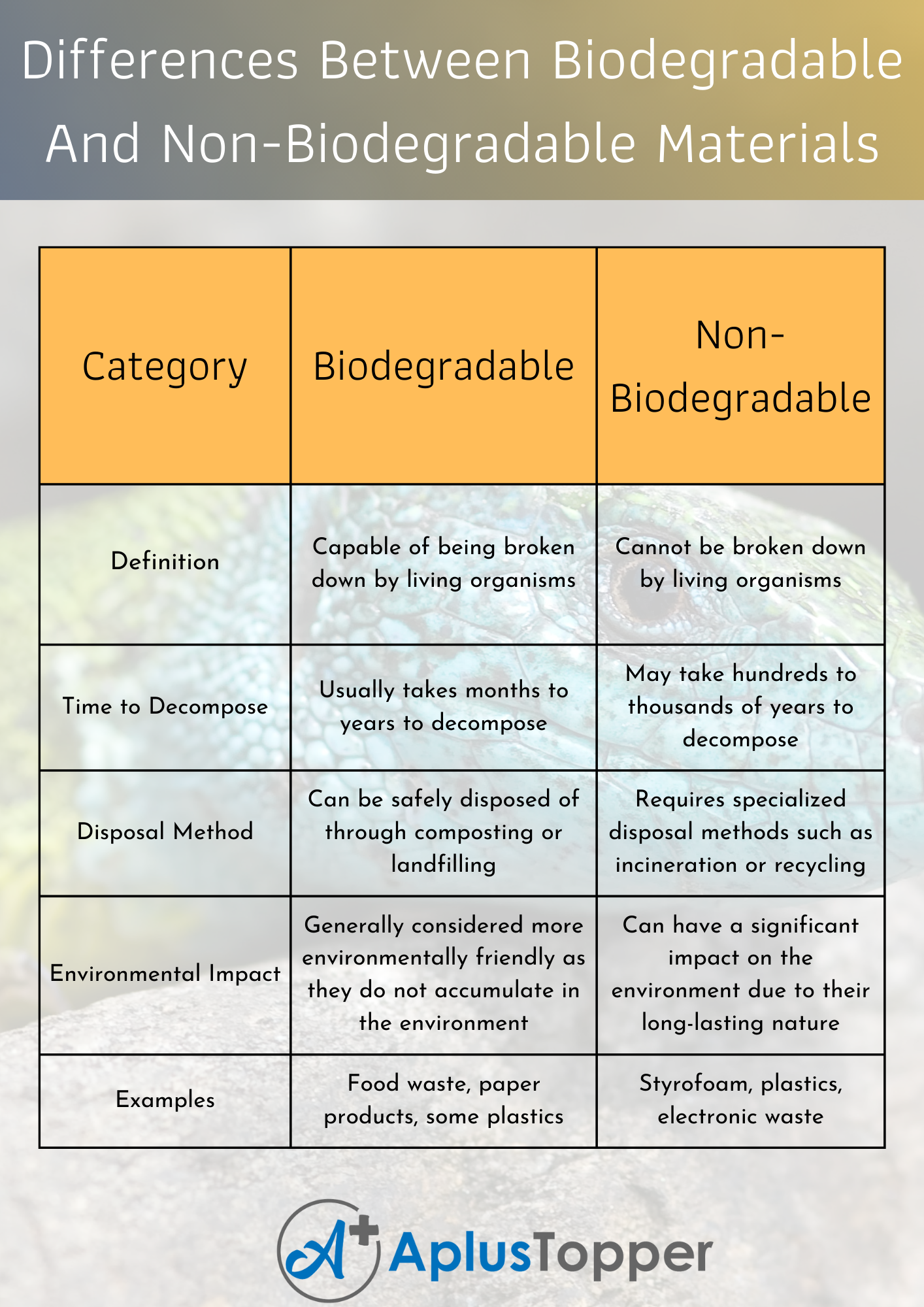Difference Between Biodegradable And Nonbiodegradable: The environment is a precious resource that we all share, and it is our responsibility to protect it. As consumers, we have the power to make choices that have an impact on the environment. One of the choices we can make is to choose biodegradable materials over non-biodegradable materials. In this article, we will explore the difference between biodegradable and non-biodegradable materials, their impact on the environment, and why it is important to use biodegradable materials.
You can read more Essay Writing about sports, events, festivals, personalities, and other differences between any of the two.
What Are Biodegradable Materials?
Biodegradable materials are materials that can be broken down naturally by bacteria, fungi, or other living organisms. These materials are typically made from organic substances like plant fibers, food waste, and paper. Biodegradable materials are broken down into natural elements like water, carbon dioxide, and biomass, which can be reused by nature.
Examples Of Biodegradable Materials Include:
- Paper and cardboard
- Food waste
- Wood
- Plant-based plastics
- Natural fibers like cotton and hemp.
Advantages Of Biodegradable Materials
The advantages of biodegradable materials include their ability to break down naturally without causing harm to the environment, their reduced dependence on fossil fuels, and their potential for reuse in the form of compost or fertilizer. However, biodegradable materials can also be more expensive to produce and may not always be suitable for all applications.
What Are Non-Biodegradable Materials?
Non-biodegradable materials are materials that cannot be broken down naturally by living organisms. These materials are typically made from synthetic or inorganic substances like plastics, metals, and glass. Non-biodegradable materials do not break down in the environment and can persist for hundreds or even thousands of years.
Examples Of Non-Biodegradable Materials Include:
- Plastics.
- Metals like aluminum and steel.
- Glass.
- Styrofoam.
- Chemicals and pesticides.
Significance Of Non-Biodegradable Materials
Non-biodegradable materials have a significant impact on the environment, particularly in the form of pollution. Non-biodegradable materials that are improperly disposed of can end up in the ocean or other bodies of water, where they can harm marine life and the environment. Additionally, non-biodegradable materials can release toxic chemicals into the environment, which can have negative effects on human health.
Key Differences Between Biodegradable And Non-Biodegradable Materials

The key differences between biodegradable and non-biodegradable materials include their environmental impact, decomposition process, production and disposal, and usage and applications. Sure, here are the differences between fragmentation and regeneration presented in a tabular form:
| Category | Biodegradable | Non-Biodegradable |
|---|---|---|
| Definition | Capable of being broken down by living organisms | Cannot be broken down by living organisms |
| Time to Decompose | Usually takes months to years to decompose | May take hundreds to thousands of years to decompose |
| Disposal Method | Can be safely disposed of through composting or landfilling | Requires specialized disposal methods such as incineration or recycling |
| Environmental Impact | Generally considered more environmentally friendly as they do not accumulate in the environment | Can have a significant impact on the environment due to their long-lasting nature |
| Examples | Food waste, paper products, some plastics | Styrofoam, plastics, electronic waste |
Conclusion
In conclusion, biodegradable and non-biodegradable materials are fundamentally different in terms of their ability to break down naturally and their impact on the environment. Biodegradable materials are beneficial for the environment because they can decompose naturally and reduce pollution, while non-biodegradable materials are harmful to the environment because they can persist for long periods of time, releasing harmful chemicals and contributing to pollution. Therefore, it is important to reduce the use of non-biodegradable materials and promote the use of biodegradable alternatives to protect the environment and promote sustainability.
Also Read: 10 Lines On Say No To Plastic Bags
